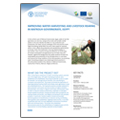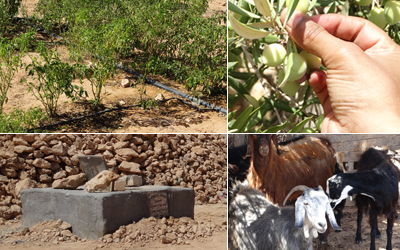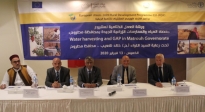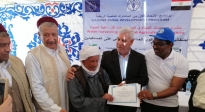Beside its effect on crop production and productivity, the water scarcity challenges of the area and the erratic highly fluctuating rainfall affects the area’s feed supply for livestock which in turn affect the production and reproductive performances of animals as assessed by the number of offspring per female and per year, body weight and milk yield.
Objectives
Overall objective(s) are:
- to increase the sustainability and production of rain-fed agriculture in the rural areas of northern Matrouh and
- to improve the livelihood of the rural poor in the area.
Specific objective(s) are to scale up water harvesting and crop-related GAPs in rain-fed areas in northern Matrouh.
Main Activities
- Baseline socio-economic report and stakeholders’ consultation for beneficiary selection delivered.
- Inventory report of available water harvesting techniques and systems prepared.
- Land use, land cover and topography report for selection of suitable water harvesting measures prepared.
- Water harvesting structures built.
- GAP demonstrations established for olive, fig, almond, barley and wheat crops.
- Livestock production implemented to improve household nutrition.
Stakeholders
Ministry of Agriculture and Land Reclamation (MALR), Egyptian Environmental Affairs Agency (EEAA), Ministry of water resources and irrigation, Matrouh local government, Agriculture Directorate of Matrouh, Animal Production Research Center Institute (APRI) and other research institutions in the area, governmental, non-governmental and civil society organizations, farmers and their household members especially women, and Local businesses, such as nurseries.
Latest Topics

Publications - Improving Water Harvesting and Livestock Rearing in Matrouh Governorate, Egypt
2021




